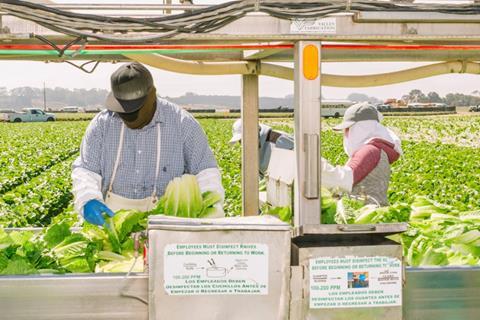
US retail giant Walmart has told its salad suppliers to start using blockchain technology to trace the origin of their products back along the supply chain by the end of January, or face the prospect of delisting.
In an open letter to its suppliers, the retailer said that all suppliers of fresh leafy greens – including those working with wholesale warehouse chain Sam’s Club – were expected to be able to trace their products back to the precise location in which they were grown “in seconds” rather than days. “To do this, suppliers will be required to capture digital, end-to-end traceability event information using the IBM Food Trust network,” it added.
To meet that requirement, Walmart’s direct suppliers must provide “one-step back traceability” on the blockchain network by 31 January 2019, while also ensuring that their own suppliers and supply chains are using the same system by 30 September 2019.
Consumers, retailers and suppliers are still counting the cost of this year’s major e.coli outbreak linked to romaine lettuce grown in Yuma, Arizona. The episode reportedly led to large amounts of salad being thrown away after officials at the Centers for Disease Control told people to avoid eating lettuce from the area suspected as the source.
“But it was difficult for consumers to know how to determine where their lettuce was grown,” explained Frank Yiannas, Walmart’s vice-president of food safety. “None of the bags of salad had ‘Yuma, Arizona’ on them.”
In the future, however, Walmart firmly believes that its chosen blockchain-based technology could do what traditional, paper-based systems have so far failed to do: pull in data from all parts of the chain – farms, packhouses, distribution centres – and enable anyone to pinpoint exactly where the leaves in a bag of salad came from without waiting for days or even weeks.
“The food system is absolutely too large for any single entity to [track],” Yiannas added. “We’ve been working with IBM to digitise that, so the information is captured on the farm with a handheld system. It’s [also] captured at the packing house at the supplier.”
As Walmart pointed out, this year’s outbreak resulted in five deaths and 96 hospitalisations among 210 confirmed cases. “Although the FDA and CDC were able to inform consumers, producers, and retailers that the romaine lettuce associated with illnesses came from the Yuma growing region, in general, health officials and industry professionals were unable to quickly determine which lots were affected and which were not,” the company’s letter noted.
“This resulted in millions of bags and heads of romaine lettuce having to be removed from the market place and a loss of consumer confidence in romaine lettuce, regardless of growing region, as well as negatively affecting the economic livelihood of many, including farmers.”
Walmart said it believed the current model of food traceability was outdated and needed significant improvement. “There is no question that there is a strong public health and business case for enhanced food traceability,” it insisted.
“By quickly tracing leafy greens back to source during an outbreak using recent advances in new and emerging technologies, impacts to human health can be minimised, health officials can conduct rapid and more thorough root cause analysis to inform future prevention efforts, and the implication and associated-losses of unaffected products that are inaccurately linked to an outbreak can be avoided.”
Over the past 18 months, Walmart has worked with IBM to pilot the new technology in collaboration with suppliers. According to the retailer, tests have demonstrated that “meaningful enhancements to food traceability” are possible.
Walmart said it would work with its leafy salad suppliers to help them implement the new system.



